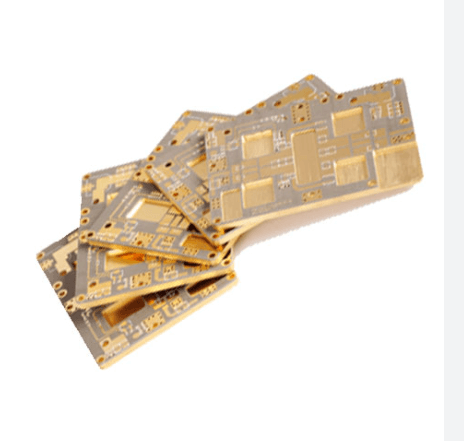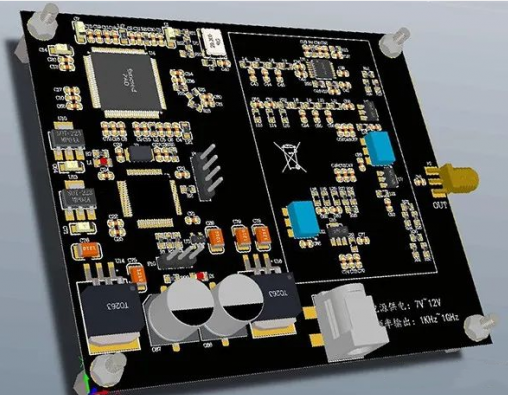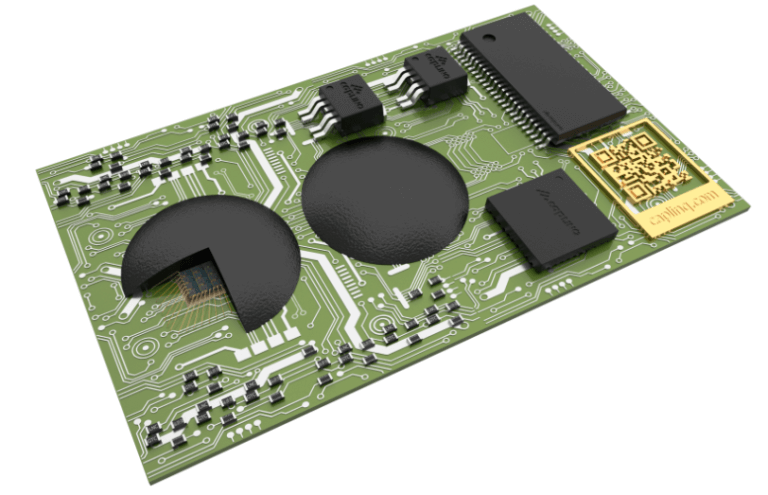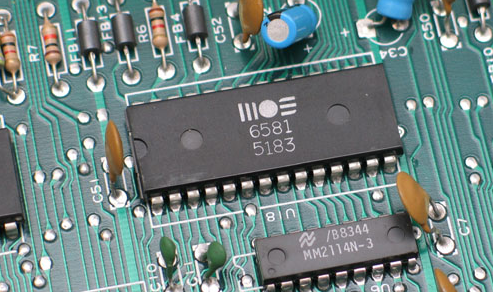Rogers 3003 pcb
Advantages Of Using Rogers 3003 PCB In High-Frequency Applications
Rogers 3003 PCB, a high-frequency laminate material, has garnered significant attention in the electronics industry due to its exceptional performance characteristics. This material is particularly advantageous in high-frequency applications, where precision and reliability are paramount.
One of the primary benefits of using Rogers 3003 PCB is its low dielectric constant, which is crucial for maintaining signal integrity in high-frequency circuits.
The dielectric constant of Rogers 3003 is stable across a wide range of frequencies, ensuring consistent performance and minimal signal loss. This stability is essential for applications such as RF and microwave circuits, where even minor variations can lead to significant performance degradation.
In addition to its low dielectric constant, Rogers 3003 PCB exhibits a low dissipation factor.
The dissipation factor measures the energy loss in a dielectric material, and a lower value indicates higher efficiency. For high-frequency applications, minimizing energy loss is critical to maintaining signal strength and reducing heat generation.
Rogers 3003’s low dissipation factor ensures that the energy is efficiently transmitted through the circuit, enhancing overall performance and reliability. Furthermore, the material’s low thermal coefficient of dielectric constant ensures that its electrical properties remain stable over a wide temperature range, making it suitable for use in environments with fluctuating temperatures.
Another significant advantage of Rogers 3003 PCB is its excellent dimensional stability.
Dimensional stability refers to the material’s ability to maintain its size and shape under varying environmental conditions. This property is particularly important in high-frequency applications, where precise circuit dimensions are necessary to ensure optimal performance. Rogers 3003’s dimensional stability ensures that the circuit’s physical characteristics remain consistent, reducing the risk of performance issues due to material deformation. Additionally, the material’s low moisture absorption further enhances its stability, as it prevents changes in electrical properties due to humidity.
The mechanical properties of Rogers 3003 PCB also contribute to its suitability for high-frequency applications.
The material is robust and durable, capable of withstanding the mechanical stresses associated with manufacturing and operation. This durability ensures that the PCB can endure the rigors of assembly processes, such as drilling and soldering, without compromising its performance. Moreover, Rogers 3003’s compatibility with standard PCB fabrication processes makes it an attractive choice for manufacturers, as it does not require specialized equipment or techniques.
Rogers 3003 PCB’s thermal management capabilities are another critical factor in its favor.
High-frequency circuits often generate significant amounts of heat, which can adversely affect performance and reliability. Rogers 3003’s excellent thermal conductivity allows for efficient heat dissipation, preventing overheating and ensuring the longevity of the circuit. This thermal management capability is particularly important in applications such as power amplifiers and antennas, where high power levels can lead to substantial heat generation.
In conclusion, the advantages of using Rogers 3003 PCB in high-frequency applications are manifold. Its low dielectric constant and dissipation factor ensure efficient signal transmission and minimal energy loss, while its dimensional stability and low moisture absorption maintain consistent performance under varying environmental conditions. The material’s mechanical robustness and compatibility with standard fabrication processes further enhance its appeal, making it a reliable choice for manufacturers. Finally, its superior thermal management capabilities ensure that high-frequency circuits can operate efficiently and reliably, even under demanding conditions. These attributes collectively make Rogers 3003 PCB an ideal material for high-frequency applications, where precision, reliability, and performance are of utmost importance.
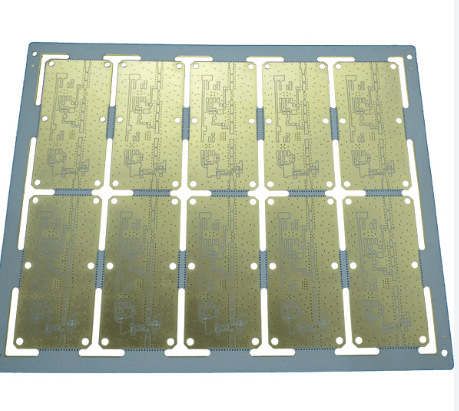
Comparing Rogers 3003 PCB To Other High-Performance Materials
Rogers 3003 PCB, a high-frequency laminate material, has garnered significant attention in the electronics industry due to its exceptional performance characteristics. When comparing Rogers 3003 PCB to other high-performance materials, it is essential to consider various factors such as dielectric constant, thermal conductivity, and mechanical stability. These attributes play a crucial role in determining the suitability of a material for specific applications, particularly in high-frequency and high-speed digital circuits.
One of the primary advantages of Rogers 3003 PCB is its low dielectric constant, which is approximately 3.0.
This low dielectric constant is beneficial for high-frequency applications as it minimizes signal loss and ensures signal integrity. In contrast, other high-performance materials, such as FR-4, typically have a higher dielectric constant, around 4.5. This higher dielectric constant can lead to increased signal attenuation and reduced performance in high-frequency circuits. Therefore, Rogers 3003 PCB is often preferred in applications where maintaining signal integrity is paramount.
In addition to its low dielectric constant, Rogers 3003 PCB also exhibits excellent thermal conductivity.
This property is particularly important in high-power applications where efficient heat dissipation is required to prevent overheating and ensure reliable operation. The thermal conductivity of Rogers 3003 PCB is approximately 0.5 W/mK, which is significantly higher than that of FR-4, which typically has a thermal conductivity of around 0.3 W/mK. This enhanced thermal performance makes Rogers 3003 PCB a suitable choice for applications that demand efficient heat management.
Moreover, the mechanical stability of Rogers 3003 PCB is another critical factor that sets it apart from other high-performance materials.
The material’s dimensional stability ensures that it maintains its shape and size under varying environmental conditions, such as changes in temperature and humidity. This stability is crucial for applications that require precise and consistent performance over time. In comparison, materials like FR-4 may exhibit greater dimensional changes under similar conditions, potentially leading to performance degradation and reliability issues.
Furthermore, Rogers 3003 PCB offers superior moisture resistance, which is essential for applications exposed to humid environments.
The material’s low moisture absorption rate ensures that its electrical properties remain stable even in the presence of moisture. This characteristic is particularly advantageous in applications such as outdoor communication systems and aerospace electronics, where environmental conditions can be unpredictable. On the other hand, materials like FR-4 may absorb more moisture, leading to changes in their dielectric properties and potentially compromising performance.
While Rogers 3003 PCB excels in many areas, it is also important to consider its cost relative to other high-performance materials.
The advanced properties of Rogers 3003 PCB come at a higher price point compared to more conventional materials like FR-4. However, the investment in Rogers 3003 PCB can be justified by the enhanced performance, reliability, and longevity it offers, particularly in demanding applications where these attributes are critical.
In conclusion, when comparing Rogers 3003 PCB to other high-performance materials, it is evident that its low dielectric constant, excellent thermal conductivity, mechanical stability, and superior moisture resistance make it a standout choice for high-frequency and high-power applications. While the cost may be higher, the benefits it provides in terms of performance and reliability often outweigh the additional expense, making it a preferred material for many advanced electronic applications.

Design Tips For Optimizing Rogers 3003 PCB Performance
When designing a printed circuit board (PCB) using Rogers 3003 material, it is essential to consider several factors to optimize performance. Rogers 3003 is a high-frequency laminate known for its excellent electrical properties, making it a popular choice for RF and microwave applications. To fully leverage its capabilities, designers must pay close attention to various design aspects, including material selection, layer stack-up, trace width, and impedance control.
Firstly, understanding the material properties of Rogers 3003 is crucial.
This laminate offers a low dielectric constant (Dk) and low loss tangent, which are vital for maintaining signal integrity at high frequencies. The low Dk ensures minimal signal delay, while the low loss tangent reduces signal attenuation. Consequently, these properties make Rogers 3003 an ideal choice for high-speed and high-frequency circuits. However, to maximize these benefits, designers must carefully select complementary materials for other layers in the PCB stack-up.
Transitioning to the layer stack-up, it is important to design a configuration that minimizes signal loss and crosstalk.
A well-planned stack-up can significantly enhance the performance of the Rogers 3003 PCB. Typically, a multi-layer stack-up is preferred, with Rogers 3003 used for the critical high-frequency layers and other materials for the remaining layers. This approach not only optimizes performance but also helps manage costs. Additionally, maintaining symmetry in the stack-up is essential to prevent warping and ensure mechanical stability.
Another critical aspect is the trace width and spacing.
Given the high-frequency nature of applications using Rogers 3003, precise control over trace dimensions is necessary to maintain consistent impedance. Impedance mismatches can lead to signal reflections and loss, degrading overall performance. Therefore, designers should use impedance calculators and simulation tools to determine the optimal trace width and spacing for their specific application. Moreover, maintaining uniform trace width throughout the PCB is vital to avoid impedance variations.
In conjunction with trace width, the choice of via structures also plays a significant role in optimizing PCB performance. Vias are used to connect different layers of the PCB, and their design can impact signal integrity. For high-frequency applications, it is advisable to use blind or buried vias instead of through-hole vias. This approach minimizes signal path discontinuities and reduces parasitic inductance and capacitance. Additionally, via stubs should be avoided as they can cause signal reflections and degrade performance.
Thermal management is another important consideration when designing with Rogers 3003.
High-frequency circuits often generate significant heat, which can affect the performance and reliability of the PCB. Effective thermal management strategies, such as using thermal vias, heat sinks, and proper placement of components, can help dissipate heat and maintain optimal operating temperatures. Furthermore, selecting a laminate with good thermal conductivity can enhance heat dissipation.
Lastly, attention to detail in the manufacturing process is paramount.
Rogers 3003 requires specific handling and processing techniques to maintain its electrical properties. Working closely with experienced PCB manufacturers who are familiar with Rogers materials can ensure that the final product meets the desired performance specifications. Proper storage and handling of the laminate before and during manufacturing are also essential to prevent contamination and damage.
In conclusion, optimizing the performance of a Rogers 3003 PCB involves a comprehensive approach that includes careful material selection, precise layer stack-up design, accurate trace width and spacing, appropriate via structures, effective thermal management, and meticulous manufacturing processes. By considering these factors, designers can fully exploit the advantages of Rogers 3003 and achieve superior performance in high-frequency applications.
Manufacturing Challenges And Solutions For Rogers 3003 PCB
Rogers 3003 PCB, a high-frequency laminate material, is widely recognized for its exceptional electrical performance and mechanical stability. However, manufacturing printed circuit boards (PCBs) using Rogers 3003 presents several challenges that require meticulous attention and innovative solutions. Understanding these challenges and the corresponding solutions is crucial for achieving optimal performance and reliability in high-frequency applications.
One of the primary challenges in manufacturing Rogers 3003 PCBs is the material’s sensitivity to temperature variations.
Unlike traditional FR-4 materials, Rogers 3003 has a lower coefficient of thermal expansion (CTE), which can lead to dimensional stability issues during the lamination and soldering processes. To address this, manufacturers must carefully control the thermal profiles during these processes. Utilizing advanced thermal management techniques, such as pre-baking the laminate to remove moisture and employing gradual heating and cooling cycles, can mitigate the risks associated with thermal stress.
Another significant challenge is the material’s relatively high dielectric constant and low dissipation factor, which are critical for high-frequency applications.
These properties necessitate precise control over the etching process to ensure accurate impedance matching and signal integrity. To achieve this, manufacturers often employ advanced photolithography techniques and high-resolution imaging systems. Additionally, using specialized etching solutions and maintaining stringent process controls can help achieve the desired line widths and spacing, thereby ensuring the electrical performance of the PCB.
The mechanical properties of Rogers 3003 also pose challenges during the drilling and routing processes.
The material’s inherent softness can lead to issues such as burr formation and tool wear, which can compromise the quality of the vias and edges. To overcome these challenges, manufacturers typically use high-speed drilling machines equipped with specialized drill bits designed for soft materials. Implementing a multi-step drilling process, including a deburring step, can further enhance the quality of the drilled holes. Additionally, employing precision routing techniques and using sharp, carbide-tipped tools can help achieve clean and accurate edges.
Adhesion between the Rogers 3003 laminate and the copper foil is another critical aspect that requires careful consideration.
Poor adhesion can lead to delamination and reliability issues, especially in high-frequency applications where signal integrity is paramount. To enhance adhesion, manufacturers often employ surface treatment techniques such as plasma cleaning or chemical roughening. These treatments increase the surface roughness of the laminate, thereby improving the mechanical interlocking between the laminate and the copper foil. Additionally, using high-quality bonding materials and optimizing the lamination pressure and temperature can further enhance the adhesion strength.
Finally, the inspection and testing of Rogers 3003 PCBs present unique challenges due to the material’s specialized properties.
Traditional inspection methods may not be sufficient to detect defects such as micro-cracks or voids that can affect the PCB’s performance. Advanced inspection techniques, such as X-ray imaging and automated optical inspection (AOI), are often employed to ensure the integrity of the PCBs. Additionally, rigorous electrical testing, including impedance and signal integrity testing, is essential to verify that the PCBs meet the required specifications.
In conclusion, manufacturing Rogers 3003 PCBs involves addressing several challenges related to thermal management, etching precision, mechanical processing, adhesion, and inspection. By employing advanced techniques and maintaining stringent process controls, manufacturers can overcome these challenges and produce high-quality PCBs that meet the demanding requirements of high-frequency applications. The continuous evolution of manufacturing technologies and materials science will undoubtedly contribute to further advancements in the production of Rogers 3003 PCBs, ensuring their continued relevance in the ever-evolving electronics industry.

